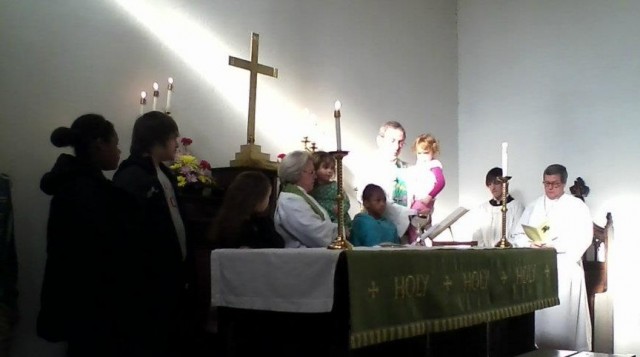Income inequality, and the apparent widening of the gap between rich and poor has become a prominent issue in our time. Incomes for the wealthiest continue to rise, while working class wages remain stagnant at best, with an ever-increasing share of the national wealth accruing to the already well-off. With climate change, this may be the most prominent challenge facing the world today.
But what role can the church play? In what ways are the church and religious participation factors in this challenge?
Two recent articles, at NBC news and the Washington Post, inspired by the work of political scientist and author Robert Putnam (best known for his book Bowling Alone) have looked into the idea that declining religious participation is potentially a contributing factor to the rising wealth-gap.
NBC news has been hosting an exploration of Poverty in America called In Plain Sight on its website and recently posted an article titled Class in America: Want to Get Ahead? Try Church that features an interview with Richard Aguilar, an Episcopal priest in Arizona who recounts how the caring mentoring of a priest in his childhood put him and his brothers on the path to a middle-class life.
It was the pastor at their Episcopal church who helped his brother to get into college, which led him to a successful career as a health administrator.
“That would not have happened without the guidance of the church,” Aguilar said. The same pastor was responsible for Aguilar himself gaining admission, with tuition paid, to a private Episcopal high school in San Antonio, which led to college, and then seminary.
“If the church was not part of our life 45 years ago, we’d be a very different family,” Aguilar says. “I would be living in San Antonio working at JCPenney.”

But Aguilar is bothered by the lack of similar families in his church today.
So when he [Aguilar] looks out at the pews in the low-income communities where he now works, he’s regularly bothered by the absence of young faces.
“Young people in this community just aren’t coming to church,” he says.
Putnam’s research shows that in the early 20th century, low income families participated in church at rates similar to their wealthy peers, but that began to change in the last quarter of the century so that today teenage children of the families at the lowest socioeconomic levels spend about a third less time attending religious services than their wealthier peers.
But it’s not just religious participation that has declined. Those on the lowest economic rungs are absent from a range of institutions and activities that once served to cement communities together and that offered opportunities for connection and mentorship that helped young people escape from poverty.
As the Op-ed in the Washington post put it;
The picture of religion painted by Putnam, a political scientist and the foremost scholar of American civic life, is part of a broader canvass in his book showing that kid-friendly institutions — not just churches, but also strong families and strong schools — are withering, but almost entirely in less-affluent communities. American children from better-educated and more affluent homes enjoy decent access to churches, families and schools, which lifts their odds of realizing the American Dream, even as kids from less-privileged homes are increasingly disconnected from these key institutions, making the American Dream that much more difficult for them to pursue.
Putnam’s work suggests four factors driving this disconnect; 1)decreasing income from changes in the economy, especially for men without education beyond high school, 2) the emergence of television and the subsequent drop in participation in communal activities, 3)changing sexual mores and the emergence of strident conservative voices that cause many young people to see the church as intolerant, and 4) the increasing prominence of divorce and the declining rate of marriage, especially amongst the very poor.
The fragility of contemporary religious life in working-class and poor communities in America is rooted not only in the “economic hammer blows” dealt to communities by the new economy, but also in the technological and cultural changes that have undercut the virtues, values and institutions that sustain churches, synagogues and mosques — including strong and stable marriages and families.
But where do we go from here? WaPo suggests:
Efforts to revive religious life in our nation’s most vulnerable communities must not only address the declining economic prospects of working-class and poor young adults, but also seek ways to revive the relational climates in these communities. Holistic approaches are the best way to bridge the religious divide now separating “our kids” when it comes to connecting them to the social and spiritual goods associated with religious life in America.
What do you think? In what ways can the church begin to participate in reversing not only declining church attendance but the decline in civic engagement? What have we done that works? What do we do that gets in the way?
posted by Jon White
feature image: children at the altar, St John’s Town St, Columbus, OH. photo by Jon White

